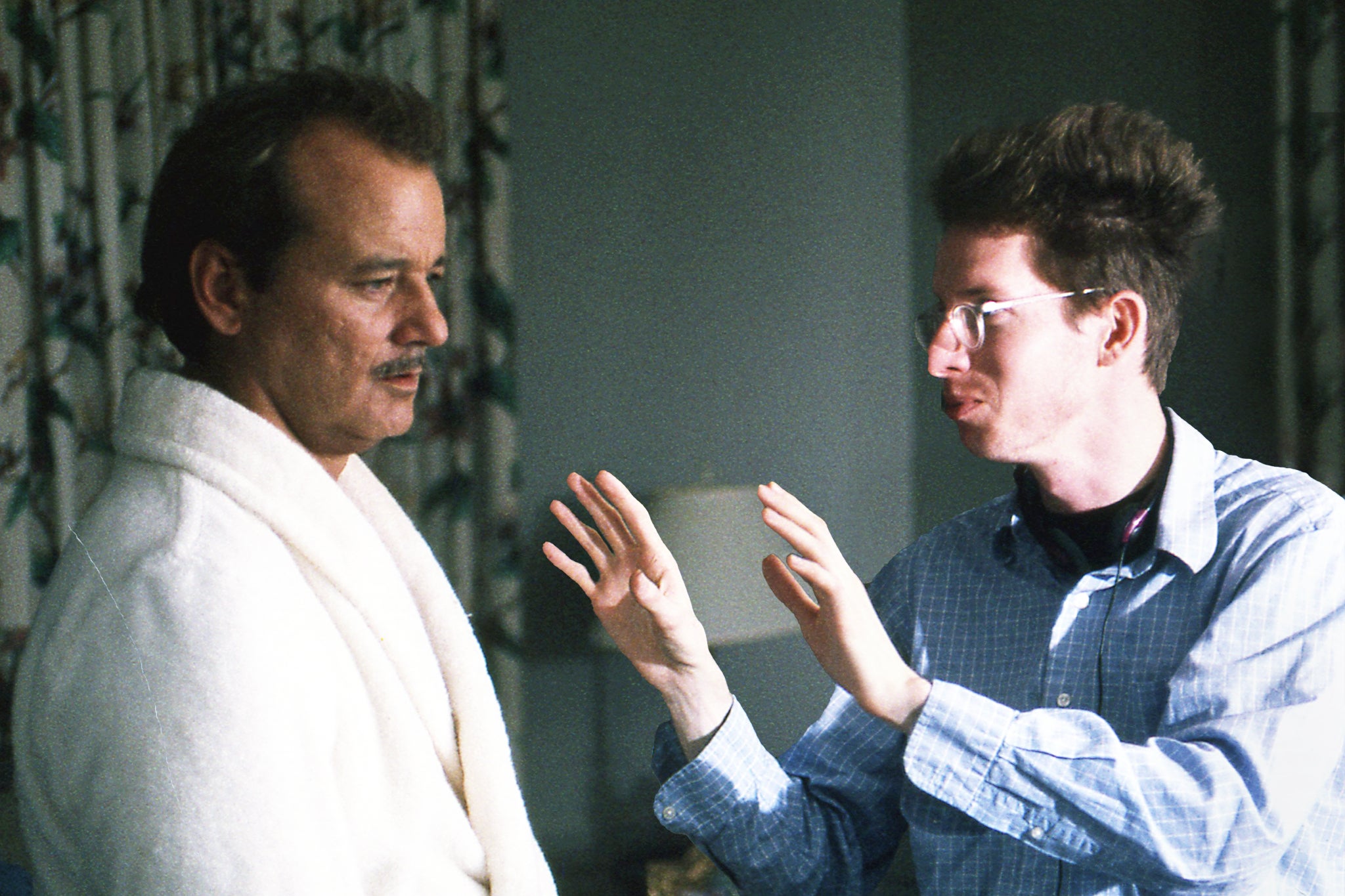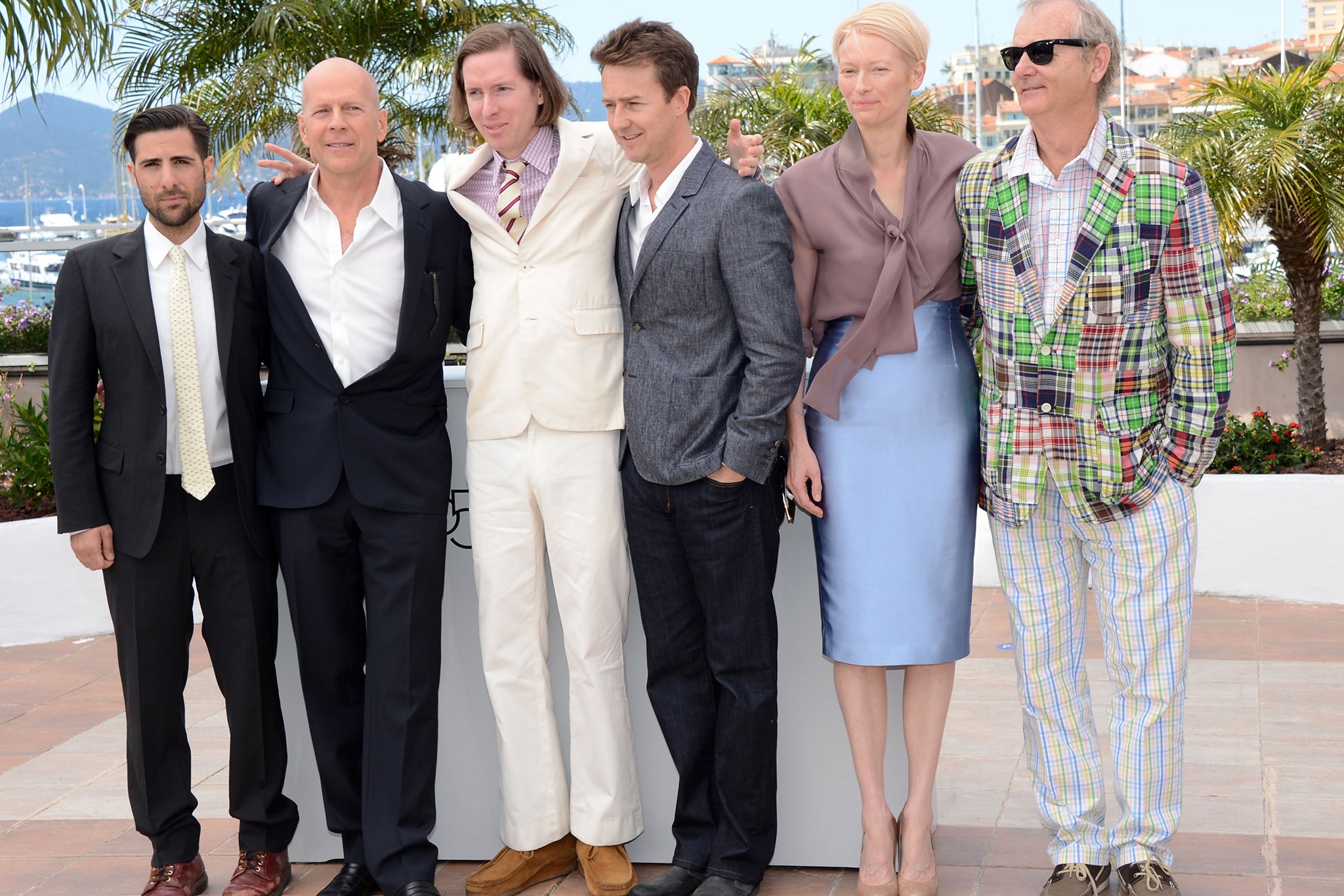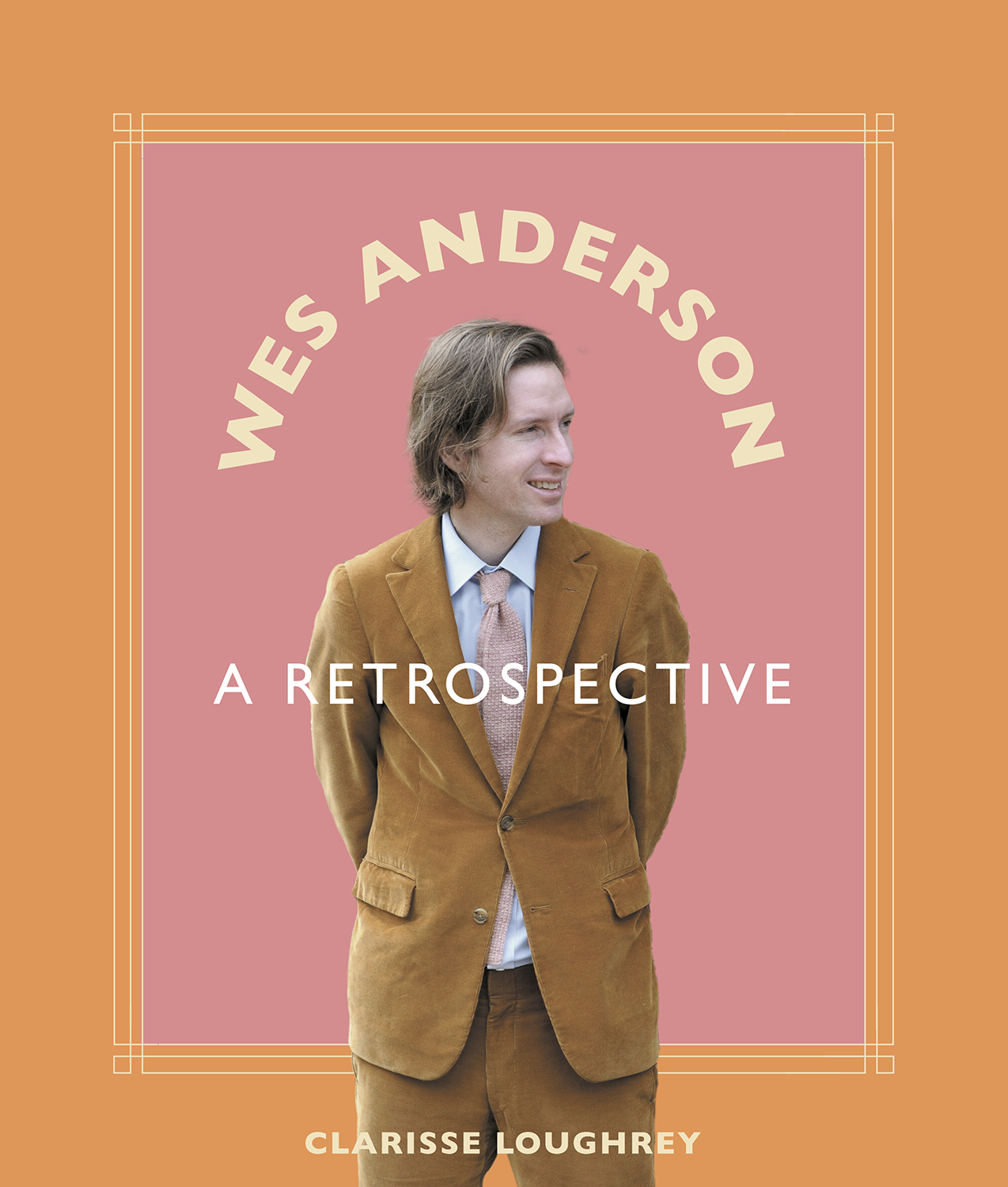- Culture
- Film
- Features
The 1998 film ‘Rushmore’ marked the beginning of Murray’s longstanding creative partnership with Hollywood’s most impeccably dressed auteur – one forged in unease and volatility, writes Clarisse Loughrey
 Sunday 23 November 2025 06:00 GMTComments
Sunday 23 November 2025 06:00 GMTComments open image in gallery‘I never have a problem with guys who make a movie that misses as long as they make the movie they want to make’: Bill Murray and Wes Anderson on the set of ‘Rushmore’ (THA/Shutterstock)
open image in gallery‘I never have a problem with guys who make a movie that misses as long as they make the movie they want to make’: Bill Murray and Wes Anderson on the set of ‘Rushmore’ (THA/Shutterstock)
Get the latest entertainment news, reviews and star-studded interviews with our Independent Culture email
Get the latest entertainment news with our free Culture newsletter
Get the latest entertainment news with our free Culture newsletter
 Email*SIGN UP
Email*SIGN UPI would like to be emailed about offers, events and updates from The Independent. Read our Privacy notice
While writing about the life and work of Wes Anderson, I found it all too easy to picture him as one of his characters: cultured and impeccably dressed, with a quiet but mordant wit, living both at the heart of and slightly outside of our world. Even at a young age, Anderson was aware that he didn’t quite fit in, and his work as an artist has always been trimmed with a sense of yearning. For where? Well, that’s the question.
It was arguably with his third film, 2001’s The Royal Tenenbaums, that the true Anderson brand emerged – at least, that’s when critics really started to throw around the term “quirky”. But his second, Rushmore, is the crucial bridge, a film in which many of his stylistic trademarks first appear: the precocious child, the use of wide anamorphic lenses, the literary or theatrical structure.
It was also his first real test as a leader, since his 1996 debut Bottle Rocket was made almost entirely alongside friends and acquaintances. It’s why Anderson, so famously, tends to stick with the same collaborators, in front of the camera and behind it. He has built, kindred spirit by kindred spirit, a family of his own imagination. And it was Rushmore that provided two of its founding members: Jason Schwartzman and Bill Murray.
——
Max Fischer, Rushmore’s juvenile hero, is not Wes Anderson. He’s has consistently denied the interpretation. He is, however, a romanticised ideal for wayward kids with outsized ambitions and limited material success. He is a Don Quixote of the educational set, enamoured by the chivalric idea of academic achievement – the only one in school who pairs his blue shirt with a navy blazer, his enamelled pins for punctuality and perfect attendance fastened to its lapel. Yet, as headmaster Nelson Guggenheim (Brian Cox) laments, “He’s one of the worst students we’ve got.”
Having been placed on “sudden academic probation”, Max seeks solace in a futile crush on first-grade teacher Rosemary Cross (Olivia Williams), who he tracks down after finding a quote scribbled inside a book by oceanographer Jacques Cousteau: “When one man, for whatever reason, has the opportunity to lead an extraordinary life, he has no right to keep it to himself.” It leads him into a rivalry with a local steel magnate, Herman Blume (Bill Murray).
 open image in galleryJason Schwartzman in ‘Rushmore’ (Touchstone/Kobal/Shutterstock)
open image in galleryJason Schwartzman in ‘Rushmore’ (Touchstone/Kobal/Shutterstock)For the role of Max, Anderson had imagined “a 15-year-old Mick Jagger”, a jumble of bones with a keen intelligence behind the eyes. But, after a year of auditions, he’d become desperate. At one point, he toyed with the idea that Max would speak with a fake English accent, “which would actually be a real English accent because we’d be using an English actor. We were just coming up with really bizarre ideas.” There was a month left before filming was set to start. It seemed as if Anderson might have to throw the entire project out the window and start afresh.
Davia Nelson, who was overseeing casting for the movie in Northern California, was at a party held in honour of composer Carmine Coppola, father of legendary director Francis Ford Coppola. She fell into conversation with Francis Ford’s daughter, Sofia, a director herself, and mentioned she was working on a project about an idealistic teen infatuated with an older woman. “That sounds like my cousin,” Sofia replied.
Jason Schwartzman, the 17-year-old son of The Godfather’s Talia Shire, and nephew of Francis Ford, had turned up to the event in a rented tuxedo, with top hat and cane. The previous summer, he’d both written and directed a play. Three years earlier, he’d fallen in love with his live-in tutor, a swimmer on the UCLA team. He told her, “Look, I want you to know that I’m madly in love with you.” She replied, “I don’t think that’s gonna work right now.” He was a musician, not an actor, the drummer for indie band Phantom Planet, whose song “California” became the theme for teen series The OC. But, when he read the script, something clicked: “I just remember thinking, ‘This is everything that I think is funny, in one movie.’”
He agreed to an audition, skipping school for the day and turning up in a blazer he’d embellished with a handmade Rushmore Academy patch. The moment he met Anderson, his nerves seemed to dissipate. The director had on Converse One Star Sandals, while Schwartzman was wearing green New Balances with bright red reflectors. They complimented each other’s choice of shoe. Then they talked about Pinkerton, the Weezer album.

Watch Apple TV+ free for 7 day
New subscribers only. £9.99/mo. after free trial. Plan auto-renews until cancelled.
Try for freeADVERTISEMENT. If you sign up to this service we will earn commission. This revenue helps to fund journalism across The Independent.

Watch Apple TV+ free for 7 day
New subscribers only. £9.99/mo. after free trial. Plan auto-renews until cancelled.
Try for freeADVERTISEMENT. If you sign up to this service we will earn commission. This revenue helps to fund journalism across The Independent.
 open image in galleryOlivia Williams and Murray in ‘Rushmore’ (THA/Shutterstock)
open image in galleryOlivia Williams and Murray in ‘Rushmore’ (THA/Shutterstock)Twenty or so minutes went by before Schwartzman even looked at his script. “I remember thinking and maybe even saying, ‘I don’t know if we should [do the scene] because this has gone so well,’” Schwartzman said. “‘I don’t want to. This is enough. You’re so awesome. Let’s not ruin it.’” But he needn’t have worried. Anderson had found his newest star, collaborator and friend.
Schwartzman didn’t look like Jagger, but he did remind Anderson of Dustin Hoffman in The Graduate – that softer, more soulful look. To pass as a 15-year-old, Schwartzman’s chest was waxed. It took around two hours.
Max tells everyone his father is a neurosurgeon at St Joseph’s Hospital. In reality, he’s the son of a barber (Seymour Cassel, known for his work with John Cassavetes), at Rushmore by the grace of a scholarship. Blume’s success, fuelled largely by resentment, gives Max hope that his grand facade may, one day, turn in positive results.
Anderson and Wilson wrote the role with Bill Murray in mind, having once hoped to cast him in Bottle Rocket. They were fans. As a child, Anderson had dressed up as a Ghostbuster for Halloween. But the actor was notoriously difficult to pin down, and most likely beyond what they could afford, so they’d dismissed the idea as wishful thinking.
 open image in gallerySchwartzman, Bruce Willis, Anderson, Edward Norton, Tilda Swinton and Murray at the ‘Moonrise Kingdom’ premiere in Cannes in 2012 (Getty)
open image in gallerySchwartzman, Bruce Willis, Anderson, Edward Norton, Tilda Swinton and Murray at the ‘Moonrise Kingdom’ premiere in Cannes in 2012 (Getty)Still, they sent Murray the script for Rushmore and a copy of Bottle Rocket. He read the script, but didn’t watch the movie. His agents sent him another copy. Murray called Anderson up. The director asked whether he’d seen Bottle Rocket. He again hadn’t, so Anderson sent him another copy. He ended up with four in total. He watched none.
The script, however, intrigued him. “I figured the writing was so specific that whoever wrote it knew exactly what they were going to shoot,” Murray said. “I never have a problem with guys who make a movie that misses as long as they make the movie they want to make.” His last two projects, the comedies Larger Than Life (1996) and The Man Who Knew Too Little (1997), had disappointed critics and audiences alike. But, with Rushmore, he could better channel the profound, self-wounding melancholy that seemed to underpin even the broadest of his characters.
When Murray phoned Anderson, they didn’t talk much about the role. Instead, the actor started to describe to him the plot of Akira Kurosawa’s Red Beard, about a doctor with mighty ambitions, who’s disappointed to be sent out to a rural clinic. They spoke for roughly an hour about the movie.
Anderson hadn’t seen it. He watched it afterwards, and still couldn’t really understand why Murray had brought it up. At the end of the conversation, the actor concluded: “Yeah, I think I’ll do… I’ll do Rushmore with you, yeah.’’ He waived the fee Anderson offered, which was already lower than usual, and agreed to do the movie for the standard Screen Actors Guild day rate, a total of $9,000.
 open image in galleryClarisse Loughrey’s ‘Wes Anderson: A Retrospective’ (Gemini Books)
open image in galleryClarisse Loughrey’s ‘Wes Anderson: A Retrospective’ (Gemini Books)The director, at first, was “a little terrified”. He’d heard that Murray had a somewhat volatile personality (there was a story he’d heard about him throwing someone in a lake). Schwartzman, too, was nervous about meeting Murray. “He’s someone who I grew up watching,” he said. “His movies meant so much to me and now all of a sudden I’m working alongside him. We have the same job now.” Murray flew into Houston the night before the shoot started, and the pair suffered through a disastrous rehearsal in Anderson’s hotel room.
“He was terrible, just terrible,” Murray said. “And I got very depressed and immediately afterwards went straight to the bar. I had to work with this guy who didn’t have a clue.” Murray would whisper odd asides into Schwartzman’s ear right before the camera rolled: “Just try to get this shot in one take, kid, I want to go play golf today.” As Schwartzman noted, “It was kind of scary to hear that from a Ghostbuster.”
Despite Anderson’s nerves, he connected almost instantaneously with Murray. He admired his intelligence. Schwartzman warmed to him, too: “I realised, around halfway through, that he was just kind of softening me. It was all on purpose.” When Disney refused to pay for a helicopter shot, Murray wrote Anderson a cheque for around $25,000. The director changed his mind on the shot, but kept the cheque.
‘Wes Anderson: A Retrospective’ by Clarisse Loughrey is published by Gemini Books on 4 December (hardback, RRP £35); Wes Anderson: The Archives is on at London’s Design Museum until 26 July
More about
Wes AndersonBill MurrayJason SchwartzmanJoin our commenting forum
Join thought-provoking conversations, follow other Independent readers and see their replies
Comments



